site search
online catalog
HISTORIC EARLY CIVIL WAR PROTOTYPE FOR A CONFEDERATE NATIONAL FLAG, FORMERLY OF THE MASTAI COLLECTION
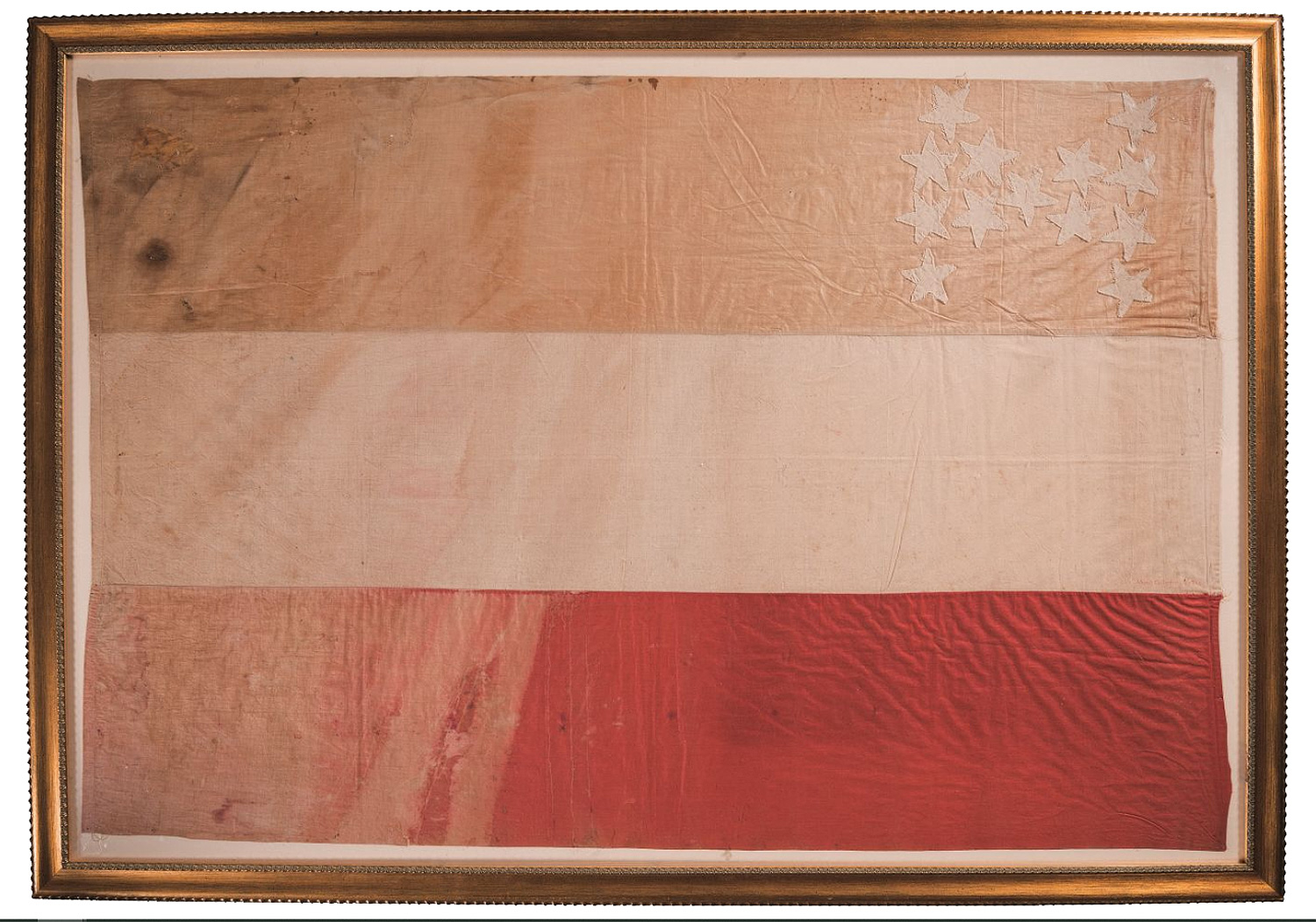
Hover to zoom


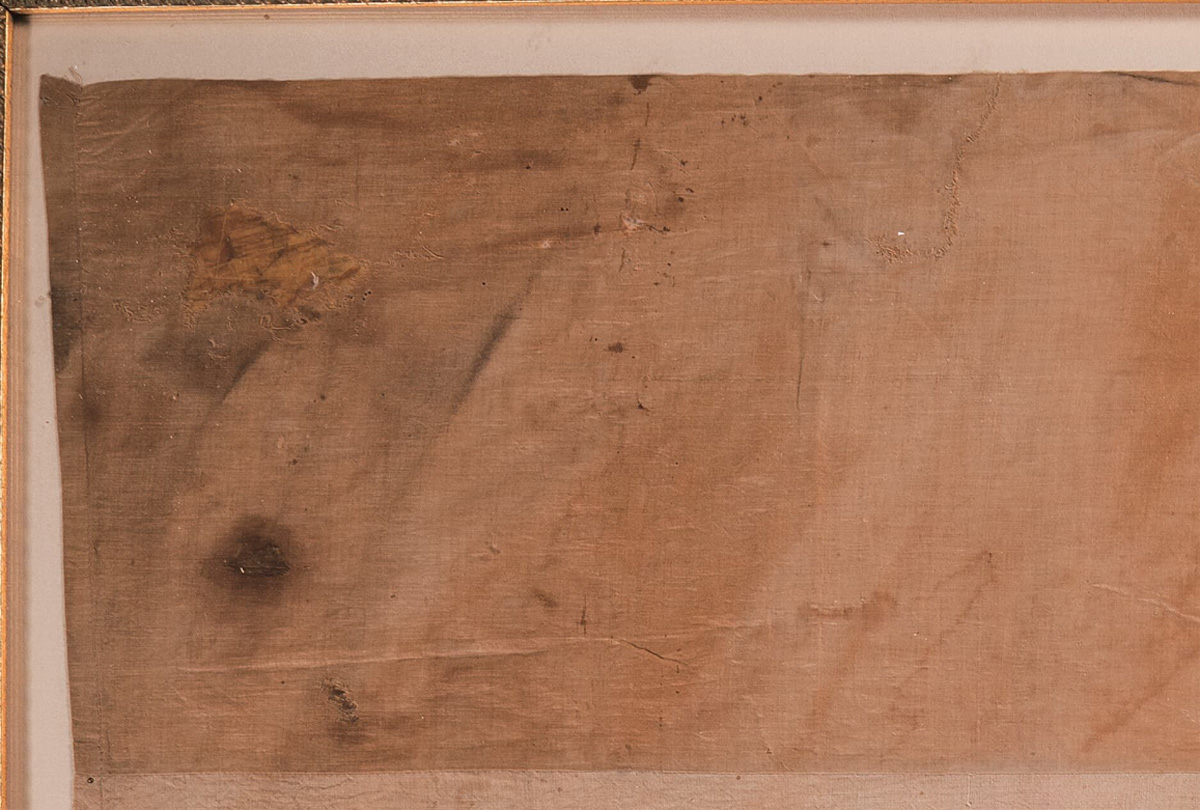
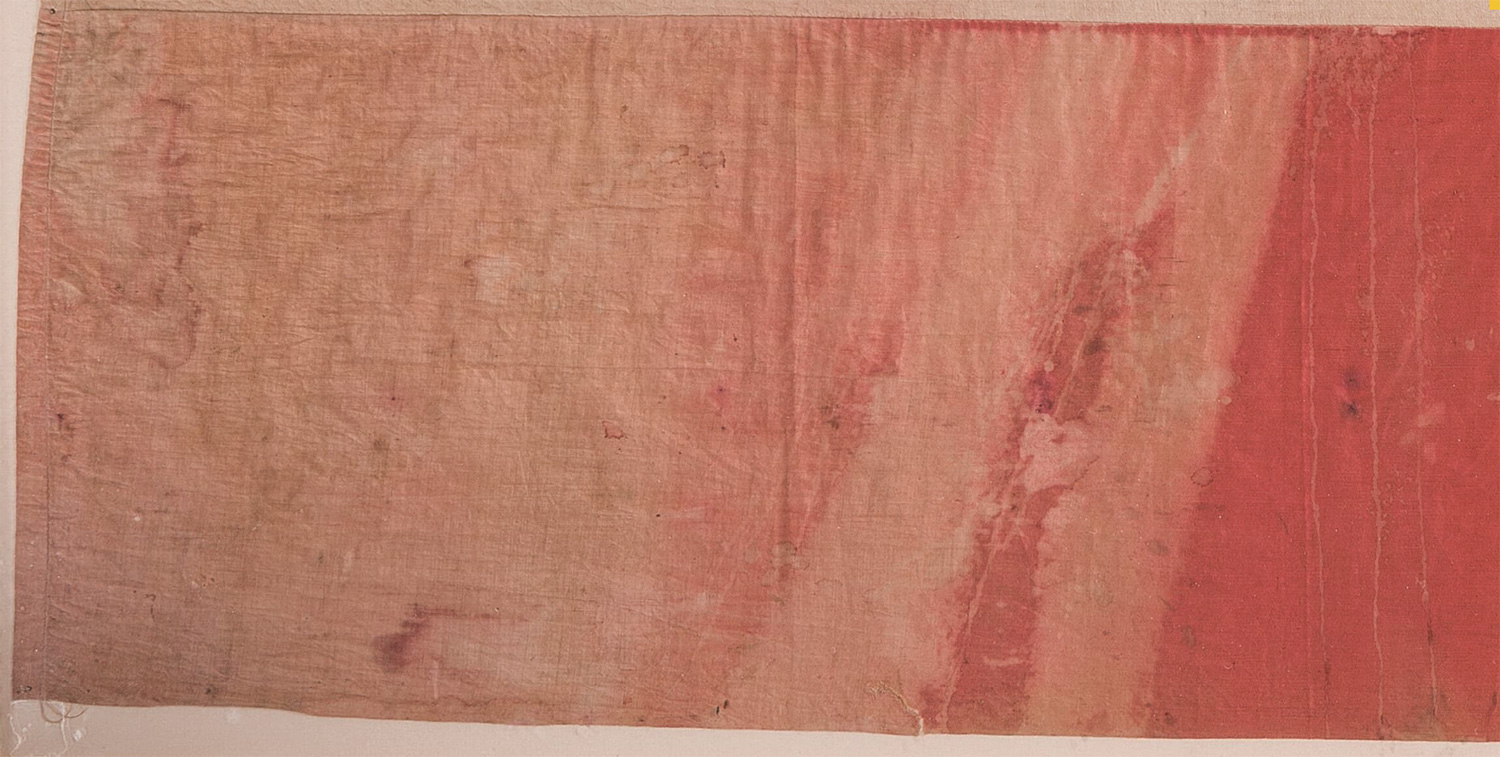
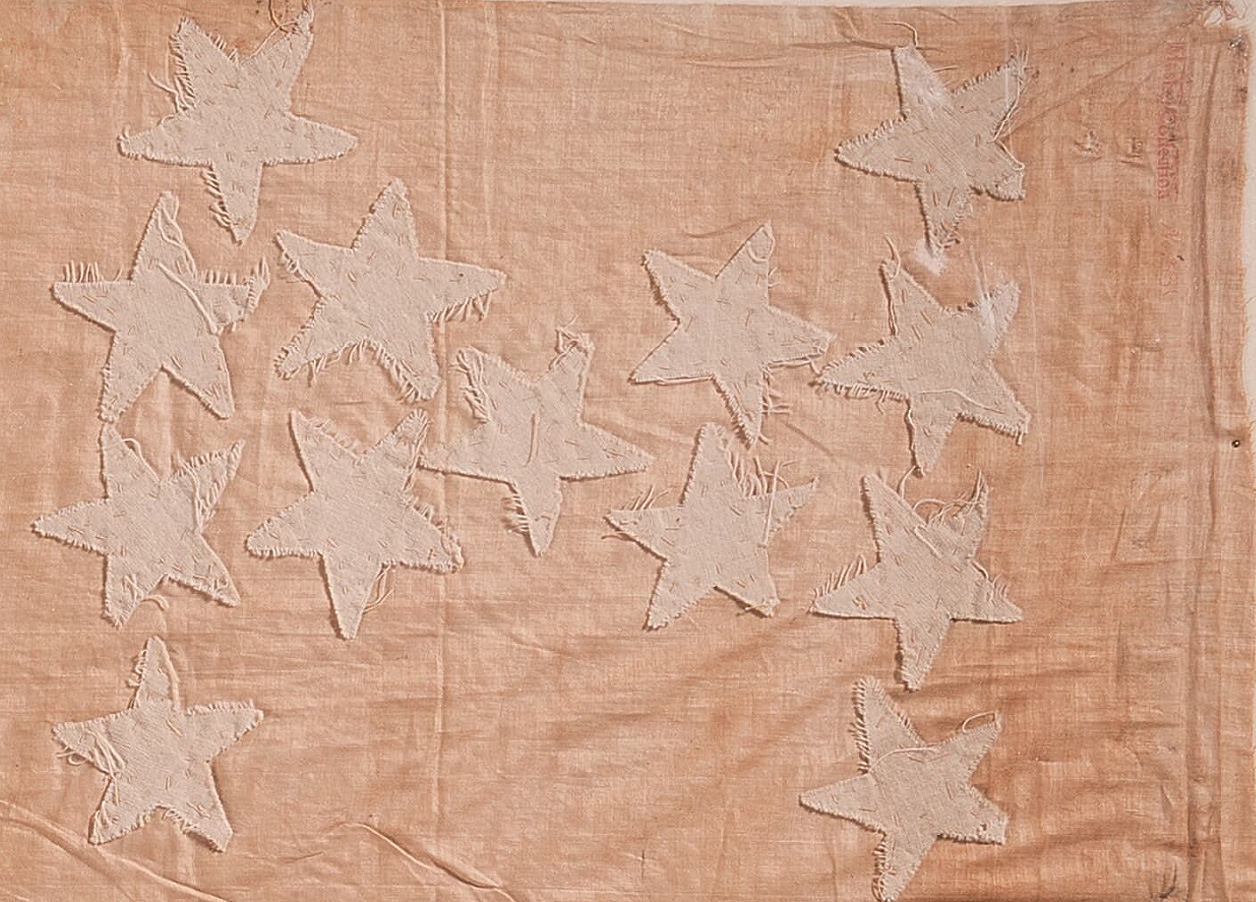
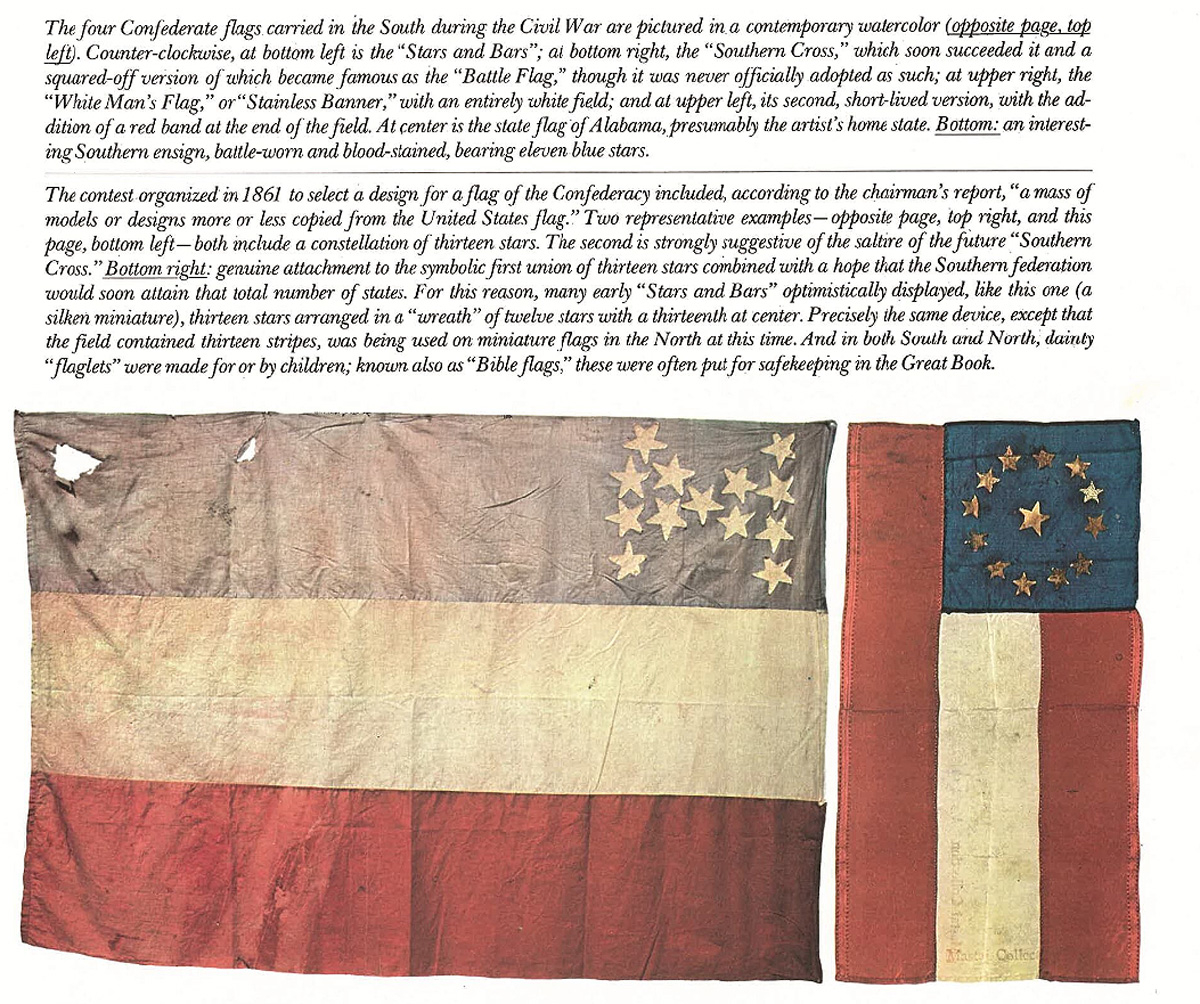
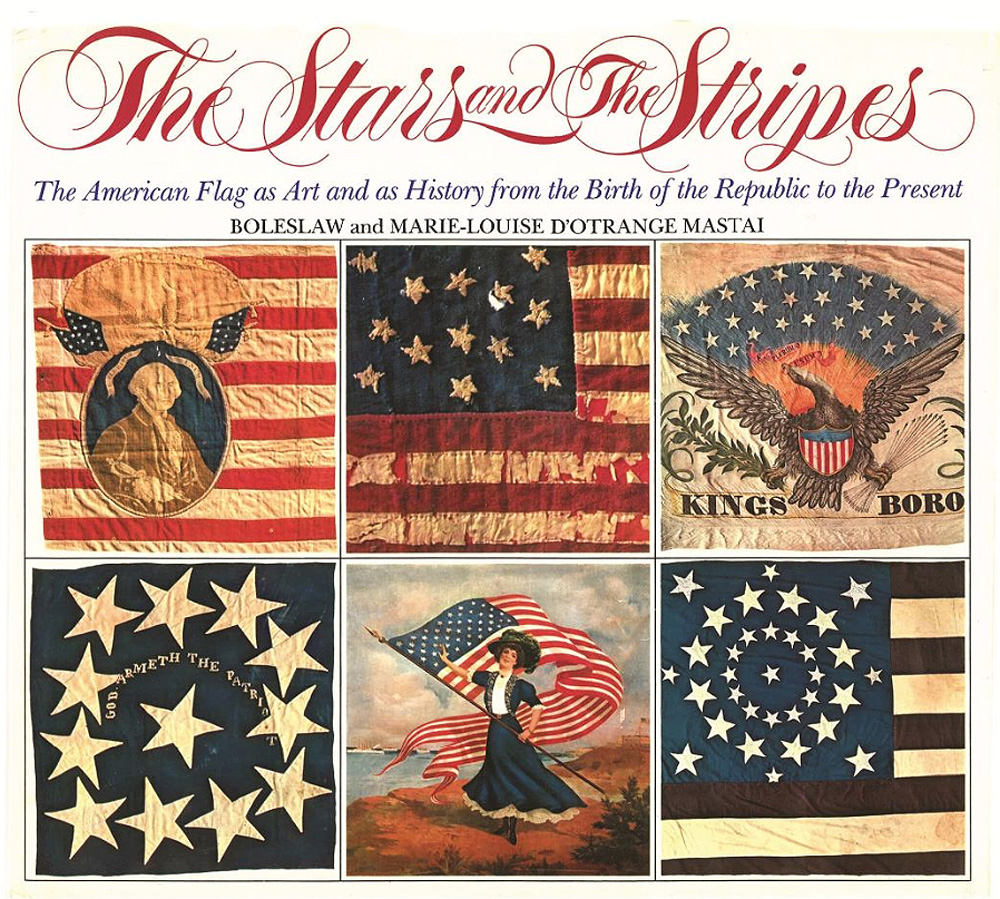
$8,500.00 SOLD
Quantity Available: None
Item Code: 1092-01
Between the secession of South Carolina on December 20, 1860, and the firing on Fort Sumter in April 1861 a wave of creativity swept the South in the design and construction of new flags. Even some northern makers got in on the act early on. This produced a wide variety of flag designs that persisted throughout the war but perhaps reached a high point after the formal establishment of the Confederate States of America in February 1861 at Montgomery when a committee of the provisional government solicited proposals for a flag for the new nation. The committee eventually settled on the well-known "stars and bars" or "First National," but there had been many contenders. These included, in the committee chairman’s words, “a mass of models or designs more or less copied from the United States flag.”
This flag seems not to appear in the list of rejected proposals, but fits in with the many patterns recorded at state and local levels across the South during the period, and several of the rejected 1861 proposals (preserved in government records) are similar. The red, white, and blue bars are reminiscent of a design submitted by Robert Newman, though the order is different and he proposed a line of 15 stars, symbolizing slave states, on a narrower, central blue bar. P.J. Anderson of Montgomery submitted several designs, one of which used a field of broad red, white, and blue bars (top to bottom). But there were doubtless many others, some created in fabric and others that never made it beyond pen and paper.
This flag was formerly in the well-known Mastai collection, and it bears a red “Mastai Collection” stamp in two places, along with their collection inventory number “331.” It is pictured in “The Stars and The Stripes: The American Flag as Art and as History from the Birth of the Republic to the Present” (page 137) as an example of the inventiveness of these suggested Confederate national flags in using varicolored bars instead of red and white stripes but also revealing a debt to the U.S. flag in the continued use of a constellation of thirteen stars. Measuring roughly 36 by 54 inches, the flag is constructed of three machine-sewn cotton stripes, blue, white and red (top to bottom), each 12 inches wide. In the upper corner are thirteen hand-sewn five-pointed stars. The formation of the stars is unusual. Some collectors refer to it as a bow tie, but Mastai observed that it suggested the Saltire or Southern Cross, which shows up in some of the suggested first national flag designs and was eventually chosen for the Confederate battle flag, though it may predate any of the actual fighting.
The scarce example shows some scattered small holes, stains, and fading, but is framed under glass and is stable. It displays very well and is a manageable size. Southern flags, not just national colors, but state and local creations, are a collecting field rich in color, variety, and history. This would look great on a collection room wall.
~~~~~~~~~~~~~~~~~~~~~~~~~~~~~~~~~~~
THIS ITEM, AS WITH ALL OTHER ITEMS AVAILABLE ON OUR WEB SITE,
MAY BE PURCHASED THROUGH OUR LAYAWAY PROGRAM.
CLICK HERE FOR OUR POLICIES AND TERMS.
THANK YOU!
Inquire About HISTORIC EARLY CIVIL WAR PROTOTYPE FOR A CONFEDERATE NATIONAL FLAG, FORMERLY OF THE MASTAI COLLECTION
Most Popular
Historical Firearms Stolen From The National Civil War Museum In Harrisburg, Pa »
Theft From Gravesite Of Gen. John Reynolds »
Selection Of Unframed Prints By Don Troiani »
Fine Condition Brass Infantry Bugle Insignia »
Large English Bowie Knife With Sheath 1870’S – 1880’S »
Imported (Clauberg) Us Model 1860 Light Cavalry Officer's Saber »
featured item
UNITED CONFEDERATE VETERANS PAINT-DECORATED DRUM- C.S. NATIONAL FLAGS, SHIELD, LIBERTY CAP; MOUNTED WITH PHOTO OF DRUMMER; WITH DRUMSTICKS
The drum is a rod tension snare drum 12 inches tall and 16-1/2 inches in diameter. The rims, heads, and screw tightened snare are intact and in place, with the snare showing just two or three loose strands. The 8 tightening rods with screw adjusted… (2025-54). Learn More »


